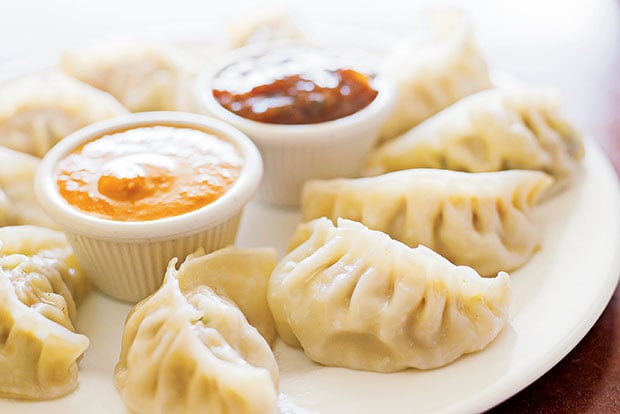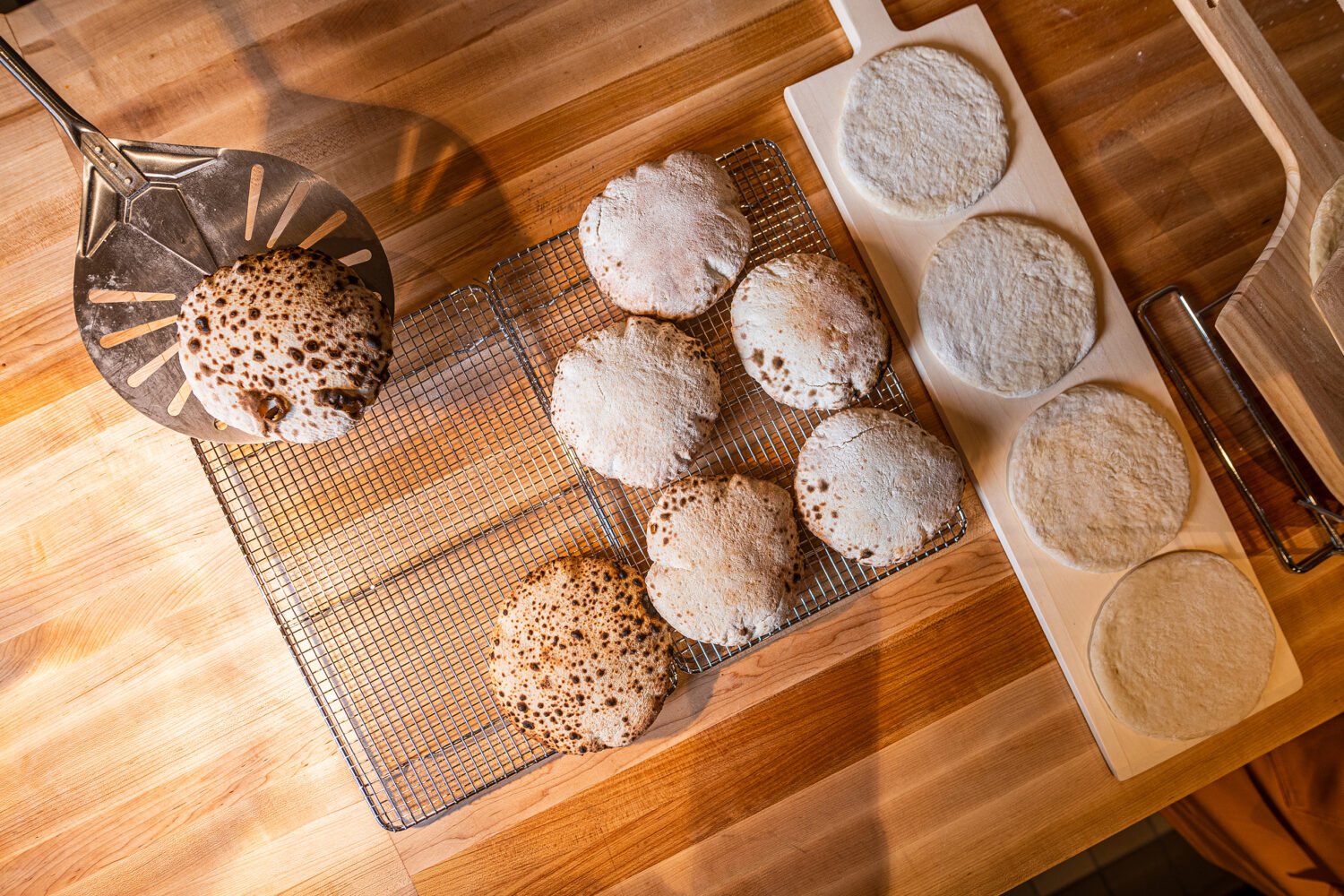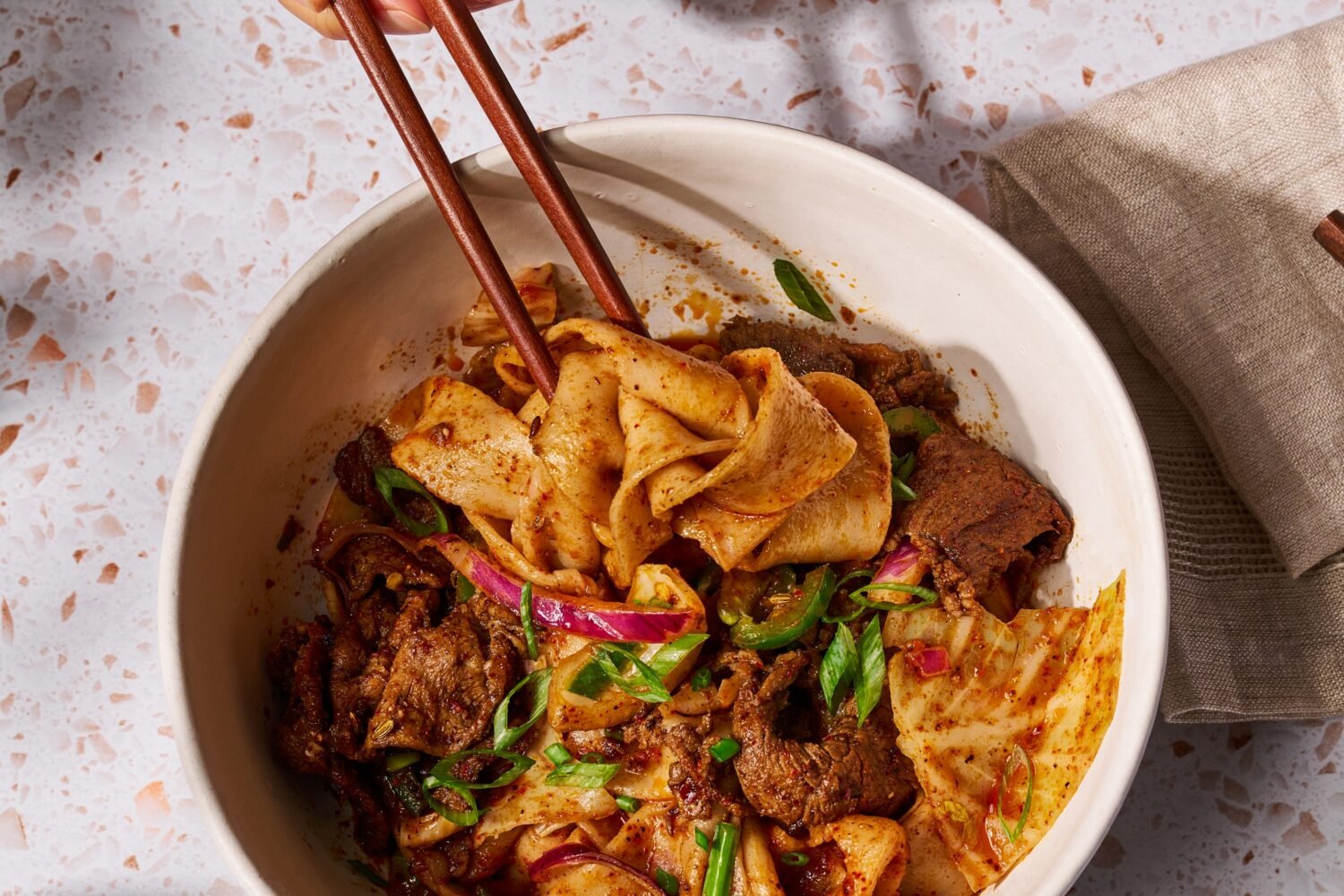About Namaste
Like its most memorable dish, Namaste enfolds a surprise.
The dish is called momo dumpling ($10.99), and it’s reason enough to pay a visit to this modest strip-mall restaurant in Alexandria. Imagine a robust yellow curry. Now imagine that robust yellow curry in the form of a tender, juicy chicken burger shot through with lots of green onion. Now swaddle that curry burger in a light, thin wrapper.
The delicate bundles beggar comparison with xiao long bao—a Chinese soup dumpling whose brothy contents prompt some diners to slurp their first tastes through a straw—but the complex, assertive spicing is unmistakably Indian. Which is fitting, given that this heady hybrid derives from Nepal, which runs thin and narrow along the northern Indian border and suggests a sausage sandwiched between two massive and powerful buns.
The men who came together to open this Indian restaurant—co-owners Atma Ram Upadhyaya and Rajendra Chaulagain and chef/co-owner Nabin Paudel, who last cooked at the very good Jewel of India—are Nepalese, too. They’ve filled their menu with the likes of butter chicken and palak paneer, but the best way to appreciate Namaste is as a restaurant within a restaurant, like Bangkok Golden before it took the bold step of incorporating its Lao menu into its Thai menu.
The dumplings are the best of the Nepalese dishes, but there are other worthy ones. Badam sadeko ($5.49), peanuts marinated with onion, tomato, and cilantro, is all brightness and crunch. Kukhura ko sekuwa ($7.49) calls to mind chicken tikka—white-meat chunks are baked in a tandoor—but the spicing is lighter. Goat curry ($15.99) submerges hunks of meat (the tenderest parts are closer to the bone) in a ginger-laced gravy.
Upadhyaya calls the decision to run an Indian restaurant smart business. “If we only do the Nepalese, a lot of the people, they don’t know what that is,” he told me. “If we make the Indian cuisine and then, inside, the Nepalese, a lot of the people, they get to try our dishes.”
With luck—and with more customers willing to venture beyond butter chicken—maybe the partners will be persuaded to feature, not enfold, the culinary pleasures of this relatively undiscovered country.
This article appears in the July 2014 issue of Washingtonian.


 100 Very Best 2024
100 Very Best 2024













